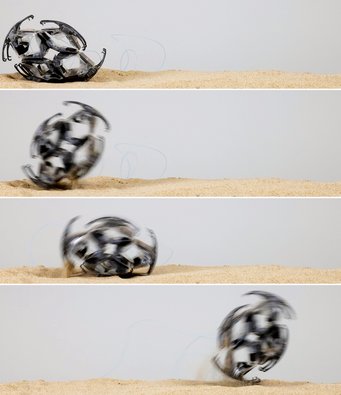A kit for versatile robots
Hexagonal electro-hydraulic modules act like artificial muscles that can be used to configure robots with various functions
Newly developed hexagonal robot components can be easily assembled into high-speed robots in building block fashion. The team from the Department of Robotic Materials at the Max Planck Institute for Intelligent Systems, led by Christoph Keplinger, has equipped each of the magnetic components with artificial muscles, known as HASELS, which react when voltage is applied. Quickly rearranged, the modules called “HEXELS” can easily be used for different purposes. Humanoid robots with such muscles are also conceivable.

Six lightweight rigid plates made from glass fiber serve as the exoskeleton of each HEXEL module. The inner joints of the hexagons are driven by hydraulically amplified self-healing electrostatic (HASEL) artificial muscles. Applying a high voltage to the module causes the muscle to activate, rotating the joints of the hexagon and changing its shape from long and narrow to wide and flat.
Flexible Robots from Hexel-modules
“Combining soft and rigid components in this way enables high strokes and high speeds. By connecting several modules, we can create new robot geometries and repurpose them for changing needs”, says Ellen Rumley, a visiting researcher from the University of Colorado Boulder. She and Zachary Yoder, who are both Ph.D. students working in the Robotic Materials Department, are co-first authors of the publication.

The team shows that many behaviors can be created with HEXEL modules. A group of modules crawls through a narrow gap, while a single module actuates so fast that it can leap into the air. Multiple modules are connected into larger structures that produce different motions depending on how the modules are attached. For instance, the team combined several modules into a robot which rapidly rolls.
“In general, it makes a lot of sense to develop robots with reconfigurable capabilities. It’s a sustainable design option – instead of buying five different robots for five different purposes, we can build many different robots by using the same components. Robots made from reconfigurable modules could be rearranged on demand to provide more versatility than specialized systems, which could be beneficial in resource-limited environments'', Yoder concludes.














